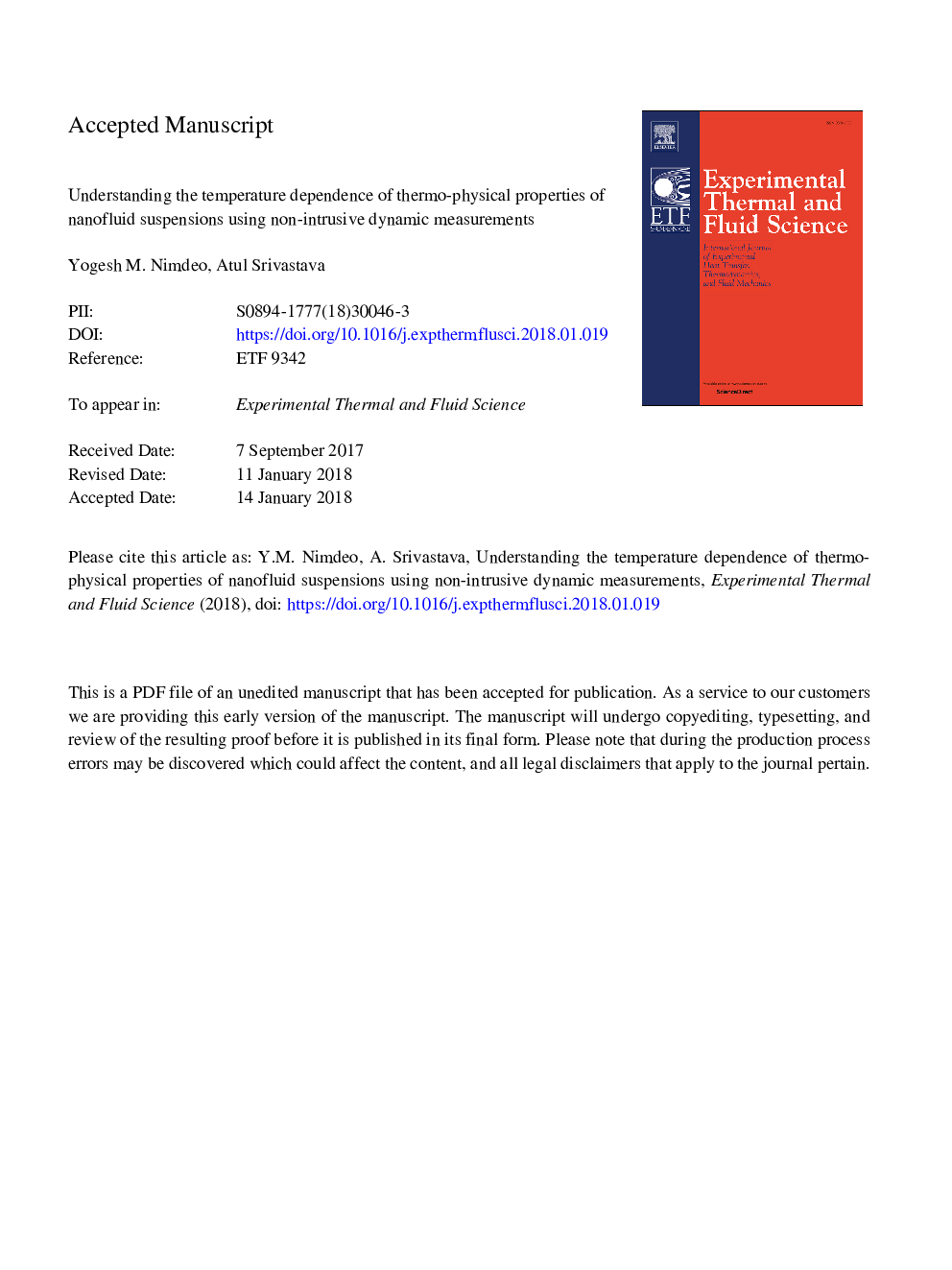| Article ID | Journal | Published Year | Pages | File Type |
|---|---|---|---|---|
| 7051753 | Experimental Thermal and Fluid Science | 2018 | 39 Pages |
Abstract
Thermal diffusivity dependence on temperature and concentration of aqueous colloidal suspensions of Al2O3 in deionized water has been investigated by conducting transient heat transfer experiments. The study has been performed in a purely non-intrusive manner using Mach Zehnder interferometry. Through the dependence of refractive index on temperature, the time sequence of recorded interferograms has been used to generate highly sensitive data of evolving temperature distribution in the thermal diffusion field. Determination of thermal diffusivity from temperature-position data has been carried out by the method of least square. In comparison with deionized water, substantial enhancement in thermal diffusivity with increasing temperature and concentration of nanofluid suspension of Al2O3 is observed through the time sequence of the recorded interferograms as well as through analytical measurements. Additionally, the measurement of ζ-potential, pH and effective viscosity of dilute Al2O3 suspension at various temperatures explains the possible mechanisms at micro-scale levels that are responsible for such an anomalous behaviour of thermal diffusivity. The competing interaction of these factors reveals dependence of thermal diffusivity on particle cluster formation and thereby in the resultant stability of the suspension. The experimental findings indicate that, at specific size and shape, the higher conductivity of solid alumina particles and their cluster formation plays a major role in enhancing the thermophysical properties of the nanofluid Al2O3 suspension over the considered range of temperature and concentration. Also, a reasonably close agreement of the obtained trends of thermal diffusivity values with those reported in the literature and clear visualization of enhancement in thermal transport through interferograms signifies the importance of the proposed non-intrusive measurement technique for reliable measurement of thermal properties of nanofluids.
Related Topics
Physical Sciences and Engineering
Chemical Engineering
Fluid Flow and Transfer Processes
Authors
Yogesh M. Nimdeo, Atul Srivastava,
